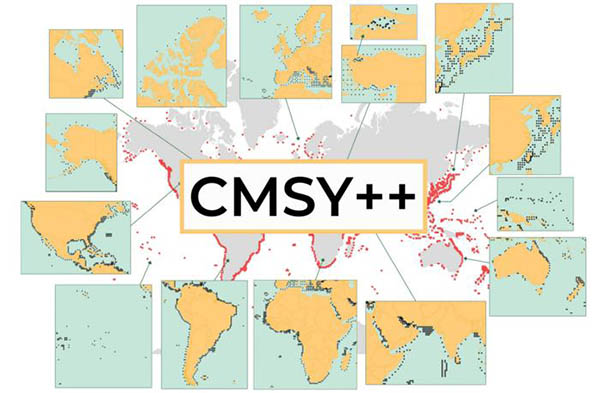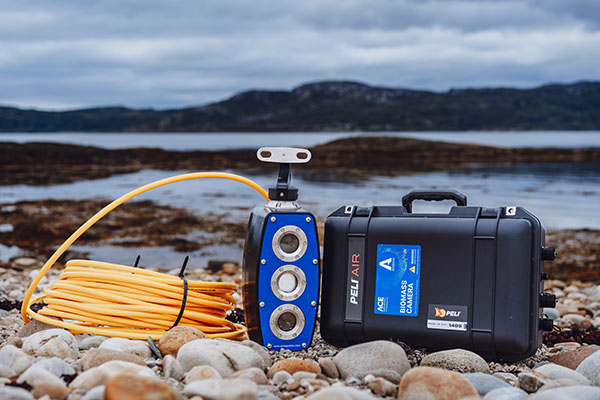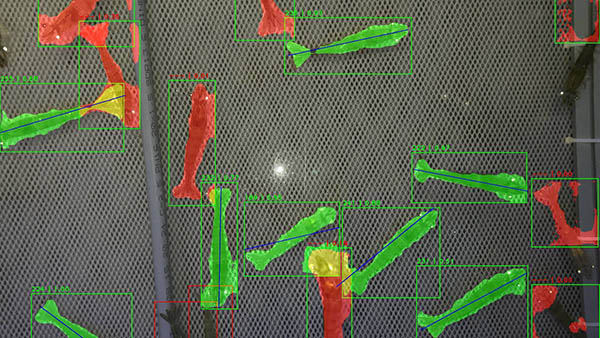AI-powered CMSY methodology requires inputting only catch data to estimate fish stocks and how much fishing pressure can be applied

A recent update introduced to the CMSY (catch maximum sustainable yield) methodology used to assess the status of fish stocks has proven to more accurately predict the catch that a population can support than highly valued data-intensive models.
In a paper published in Acta Ichthyologica et Piscatoria, an international team of researchers that shaped the improved CMSY++ model noted that its results better correspond with what is, in reality, the highest catch that a fish stock can support in the long term, given that environmental conditions do not change much.
Now powered by an artificial neural network that has been trained with catch and biomass data of 400 stocks to identify plausible ranges of the initial and final state of the stocks being assessed, CMSY++ allows managers and scientists to input only catch data to estimate how much fish is left in a given stock and how much fishing pressure can be applied.
Maximum sustainable yield (MSY) is a concept developed in the 1950s by U.S. fisheries scientist M.B. Schaefer, who proposed that if fishers left in the water a biomass equivalent to at least 50 percent of the unexploited fish population – that is, of the biomass it had before being commercially exploited – then the highest possible catches could be sustained over time.
“By comparing the results of CMSY++ to models that are considered superior because they require large amounts of initial data inputs, such as the Fox surplus-production model and the Stock Synthesis (SS3) age-structured model, we noticed that these models badly overpredicted the catch that a population can support when previous overfishing has reduced it to a small fraction of its natural size, as is the case with most exploited fish populations in the world,” said Dr. Rainer Froese, lead author of the study and a senior scientist at the GEOMAR Helmholtz Centre for Ocean Research.
In other words, the model underlying the CMSY++ method fitted the observed data, while the predictions of the “gold standard” models were too optimistic in estimating sustainable catches.
“These models tend to estimate the biomass required to produce maximum sustainable yields as less than half of unexploited biomass, which is lower than M.B. Schaefer originally proposed based on the widely observed S-shaped growth curve of unexploited populations or population size that the ecosystem would normally accommodate,” said Daniel Pauly, co-author of the study and principal investigator of the Sea Around Us initiative at the University of British Columbia. “This finding could explain the often-observed failure of fisheries managers to maintain or rebuild depleted stocks even when the predictions of the gold standard models were followed.”
Now that you've reached the end of the article ...
… please consider supporting GSA’s mission to advance responsible seafood practices through education, advocacy and third-party assurances. The Advocate aims to document the evolution of responsible seafood practices and share the expansive knowledge of our vast network of contributors.
By becoming a Global Seafood Alliance member, you’re ensuring that all of the pre-competitive work we do through member benefits, resources and events can continue. Individual membership costs just $50 a year.
Not a GSA member? Join us.
Author
-
Responsible Seafood Advocate
[103,114,111,46,100,111,111,102,97,101,115,108,97,98,111,108,103,64,114,111,116,105,100,101]
Tagged With
Related Posts

Fisheries
Artificial intelligence algorithm from WCS is the first to correctly estimate fish stocks
Researchers created an artificial intelligence model that has successfully estimated fish stocks with 85 percent accuracy in trials.

Intelligence
First Nations-led artificial intelligence technology holds promise for salmon recovery
New artificial intelligence monitoring tool is "remarkably adept" at identifying and counting fish species.

Innovation & Investment
New AI camera system can capture salmon biomass data
A newly launched biomass camera developed by Ace Aquatec uses AI to transform how salmon stocks are monitored and graded.

Innovation & Investment
New artificial intelligence technology can detect early stress symptoms in farmed shrimp
A new artificial intelligence-based computer vision system can count and measure shrimp with up to 95 percent accuracy.



